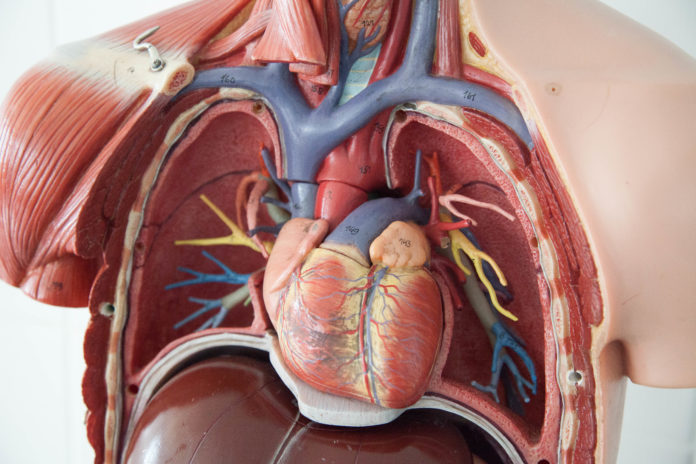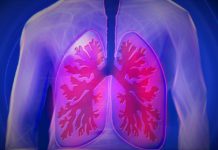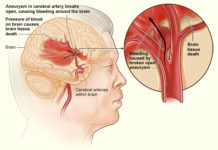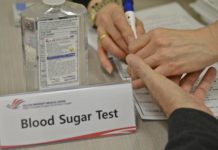
The arrival of Dabigatran, an oral direct thrombin inhibitor (Factor II) has changed the treatment landscape for nonvalvular atrial fibrillation (NVAF). It has replaced the vitamin K dependent anti-coagulants.
The approval of Dabigatran in 2010 by the Food And Drug Administration, USA was followed by other newer anticoagulants like rivaroxaban, edoxaban and apixaban, all direct factor Xa (Factor Xa) inhibitors.
In a recently published network meta-analysis study in the BMJ, 23 randomised trials involving 94656 patients were analysed to compare the efficacy, safety and cost effectiveness of newer oral anticoagulants (NOACs) for patients with nonvalvular atrial fibrillation and to find the choice of NOACs for prevention of stroke in patients with NVAF.
The study showed NOACs, as a class, reduce the risk of stroke and all-cause mortality in patients with atrial fibrillation, and are safer with respect to major and intracranial bleeding than warfarin when used at doses to maintain an international normalised ratio (INR) of 2.0-3.0. Cost effectiveness analysis provided evidence that, despite their higher costs, several NOACs are preferable to warfarin and apixaban 5 mg twice daily has the highest expected incremental net benefit, followed by rivaroxaban 20 mg once daily, edoxaban 60 mg once daily, and dabigatran 150 mg twice daily.
Atrial fibrillation (AF) is the most common rhythm disorder of the heart (arrhythmia) and it has been recognised as a major global health burden due to increasing life expectancy and increase in the coronary risk factors with age. The prevalence of atrial fibrillation roughly doubles with each decade of age, rising to almost 9% at 80-90 years. AF leads to ineffective contraction of the atria and is associated with left atrial enlargement. This results in stagnation of blood and increased propensity for clot formation within the left atrium and atrial appendage with subsequent embolization to the brain causing ischaemic stroke.
The recently released Indian state level disease burden study showed stroke as the fifth leading cause of disease burden in 2016 while ischaemic heart disease occupy the first spot. Data on atrial fibrillation from India is however very limited.
Etiologic trends observed from the RELY-AF study which included patients of AF from Africa, India and the Middle East were on average 10-12 years younger than those from other regions of the world. Similar observations were also noted from the REALIZE AF and the first Indian registry, the Indian Heart Rhythm Society (IHRS) AF study where the average age of patients with AF in India was 60 years and 54 years respectively (a decade younger than their western counterparts).
The most dreaded complication of AF is stroke/thromboembolic events, the annual incidence of such an event in nonvalvular AF is 4% per year in India as compared to 5% in the western world.
It has also been observed that the time spent in the therapeutic range for oral anticoagulation is significantly lower in countries outside North America and Western Europe as shown in the ROCKET AF trial among closely monitored patients in the warfarin arm, a substantial proportion of participants from different geographical regions had subtherapeutic anticoagulation international normalised ratio or INR (<2 for >25% of the time) which was 44% in India thereby increasing risk of stroke and other thromboembolic events.The average time spent in the therapeutic range has been observed to be 55-66%.
Vitamin K dependent anticoagulants (eg, warfarin and acenocoumarol) diminish the formation of platelet-rich and thrombotic clots in the left atrium preventing strokes and systemic embolization in patients with underlying AF and have been in use since 1950s and oral anticoagulation with warfarin (goal INR of 2 to 3) has been the mainstay of stroke prevention treatment in patients with AF.
But they have many limitations like dietary restrictions, several drug interactions, frequent monitoring of prothrombin time and INR, need of bridging due to long half life (20-60 hours) with unfractionated heparin or low molecular weight heparin (LMWH) and narrow therapeutic window (INR 2 to 3). NOACs on the other hand have no dietary restrictions, can be used in fixed dosage (adjusted for age and renal function), rapid onset of action (shorter half life 12-17 hours), wide therapeutic window and do not require routine blood monitoring.
All these factors have lead to the newer anticoagulants such as dabigatran, rivaroxaban, edoxaban and apixaban to become anticoagulants of choice in the western countries. However, their cost is substantially higher than that of warfarin and will remain so until market exclusivity periods end and generic products become available (indicative dates 2022, 2018, 2023, and 2020 for apixaban, dabigatran, edoxaban, and rivaroxaban respectively).
All the larger phase III trials comparing a NOAC with warfarin (RELY trial with Dabigatran, ROCKET AF trial with Rivaroxaban, ARISTOTLE trial with Apixaban and ENGAGE AF-TIMI 48 trial with Edoxaban) showed that these novel oral anticoagulants (NOACs) were noninferior to warfarin with dabigatran (150 mg) and apixaban being superior than the others for prevention of stroke. All NOACs also had lower rates of intracranial haemorrhage (bleeding) when compared to warfarin. However no direct trial comparing the different NOACs is available.










The men’s prostate is a vital portion of a male’s the reproductive system. It secretes fluids that help the transportation and activation of sperm. The prostate related is found just while watching rectum, below the bladder and surrounding the urethra. When there is prostate problem, in most cases really really irritating and inconvenient for the patient as his urinary product is directly affected.
The common prostate health conditions are prostate infection, enlarged prostate and cancer of the prostate.
Prostate infection, also known as prostatitis, is among the most common prostate-related problem in men younger than 55 yrs . old. Infections in the prostate are classified into four types – acute bacterial prostatitis, chronic bacterial prostatitis, chronic abacterial prostatitis and prosttodynia.
Acute bacterial prostatitis may be the least common of types of prostate infection. It is caused by bacteria perfectly located at the large intestines or urinary tract. Patients can experience fever, chills, body aches, back pains and urination problems. This condition is treated by making use of antibiotics or non-steroid anti-inflammatory drugs (NSAIDs) to relieve the swelling.
Chronic bacterial prostatitis is often a condition of the particular defect inside gland and also the persistence presence of bacteria inside the urinary tract. It can be caused by trauma for the urinary tract or by infections received from other areas of the body. A patient may go through testicular pain, back pains and urination problems. Although it is uncommon, it can be treated by removal with the prostate defect then making use antibiotics and NSAIDs to deal with the soreness.
Non-bacterial prostatitis is the reason for approximately 90% of prostatitis cases; however, researchers have not yet to determine the cause of these conditions. Some researchers believe that chronic non-bacterial prostatitis occur due to unknown infectious agents while other believe that intensive exercise and lifting can cause these infections.
Maintaining a Healthy Prostate
To prevent prostate diseases, an appropriate diet is important. These are some of the things you can do to maintain your prostate healthy.
1. Drink sufficient water. Proper hydration is critical for our health and wellbeing and it will also maintain the urinary track clean.
2. Some studies suggest that a number of ejaculations weekly will prevent prostate type of cancer.
3. Eat steak in moderation. It has been shown that consuming more than four meals of beef weekly will heighten the chance of prostate diseases and cancer.
4. Maintain an effective diet with cereals, vegetable and fruits to make sure sufficient intake of nutrients necessary for prostate health.
The most crucial measure to consider to ensure a proper prostate is to select regular prostate health screening. If you are forty years of age and above, you ought to select prostate examination one or more times a year.
Very informative
Comments are closed.